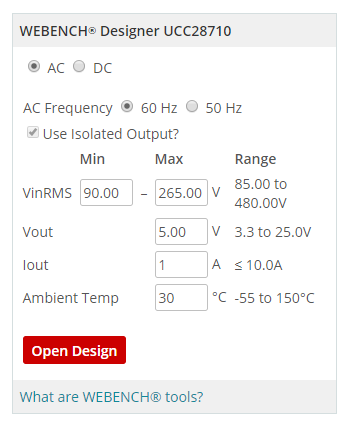Other Parts Discussed in Thread: UCC28730, , PMP40025
Dear All,
one of my customer working on PMP40025 reference design and we suggested to use UCC28710 instead of UCC28730 device for cost optimisation.
Following are the few doubts and clarifications I have: (In aim to reduce the cost of the converter)
1) In the same design replacing UCC28730 with UCC28710 produces different output at open circuit.
Ex: At a load of 120 mA, UCC28710 produces about 64.8 V, with UCC28730 it is limited between 48V to 50V. Please suggest reasons for this.
2) Whether UCC28710 can be used for 35W to 40W, with 48V o/p. , because I observe in webench design tool, the maximum voltage is about 25V as attached.
PMP40025 schematics.pdf
3) I observe that both UCC28730 and UCC28710 operates in the range of 25 kHz to 35kHz, Can it be operated in near 100kHz( UCC28710), whether this will help in reducing the size of secondary side capacitive filter.
4) Currently we use 47uF + 47uF after input side rectifier, any suggestions to reduce the value.
5) I would also like to simulate the converter and view the peak currents of primary and secondary in webench, but it shows the o/p voltage limit to 25V, as mentioned in 3)
6) Please suggest whether the components D8, Q3, R17 & D4 can be removed without affecting the safety.
TI design also attached for reference.
Rgds,
Aravind.

